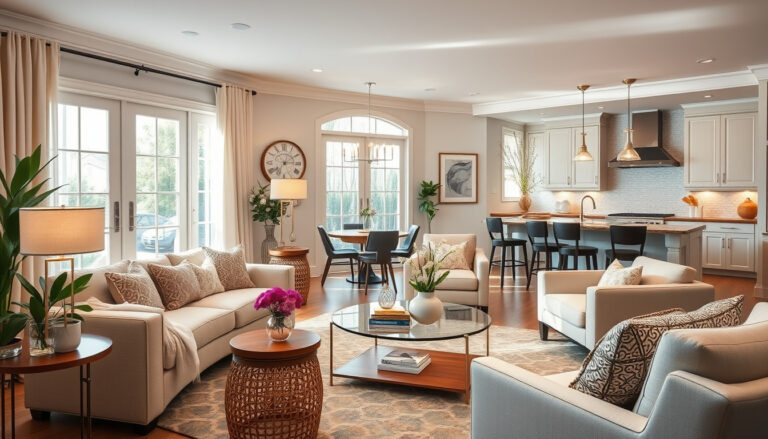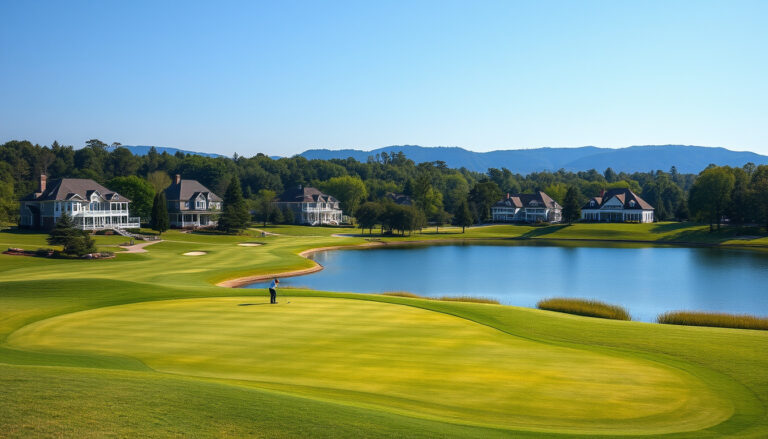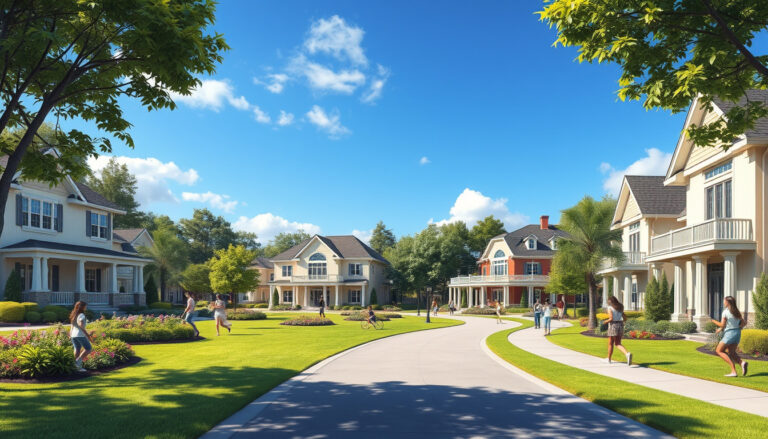In an era where environmental consciousness is paramount, creating stunning green living spaces has become more than just a trend; it’s a lifestyle choice.
Green living spaces focus on sustainability and aesthetics, allowing you to embrace nature within your home while minimizing your carbon footprint.
Whether you’re revamping a small apartment or transforming a large family home, understanding the principles of green living spaces can enhance your quality of life and promote a healthier planet.
In this ultimate guide, we’ll explore what green living spaces are, key elements to consider, and provide practical tips to design, maintain, and enjoy your own eco-friendly sanctuary.


Designing Your Green Living Space: Tips for Indoor and Outdoor Areas
Creating green living spaces is a rewarding endeavor that not only enhances your home’s aesthetic but also promotes sustainability and well-being.
Start with your indoor areas by incorporating plants that purify the air, such as snake plants or peace lilies.
Use sustainable materials like bamboo or reclaimed wood for furniture and decor, which reduce your carbon footprint while adding character to your space.
For outdoor green living spaces, consider adding native plants that require less water and maintenance, thereby fostering biodiversity.
Creating a vertical garden on your patio can maximize plant space while adding a lush, tranquil vibe.
If you have room, install a compost bin to recycle kitchen waste into nutrient-rich soil for your garden.
By intentionally designing both indoor and outdoor green living spaces, you can cultivate an environment that is not only beautiful but also environmentally friendly.
Choosing Eco-Friendly Materials: A Guide to Sustainable Products
When embarking on the journey of creating green living spaces, one of the most significant decisions you can make is to choose eco-friendly materials.
Sustainable products not only minimize your carbon footprint but also enhance the overall health and well-being of your home environment.
Begin by considering reclaimed wood, which adds character while repurposing resources and reducing deforestation.
Additionally, bamboo is an excellent choice due to its rapid growth rate and durability, making it a popular option for flooring and furniture.
Recycled materials, such as glass and metal, can also be creatively integrated into your design, reducing waste while providing unique aesthetic elements.
Furthermore, look for paints, finishes, and adhesives that are low in volatile organic compounds (VOCs) to improve indoor air quality.
By prioritizing these sustainable alternatives, you not only contribute to a healthier planet but also create inviting, green living spaces that reflect your commitment to eco-consciousness.

Incorporating Plants: Benefits of Greenery in Your Living Space
Incorporating plants into your home not only enhances the aesthetic appeal but also promotes the concept of green living spaces, which are designed to support a sustainable lifestyle.
The presence of greenery has been shown to improve air quality, reduce stress levels, and boost overall well-being.
Studies suggest that having indoor plants can increase productivity and concentration, making your home or office environment more conducive to creativity and focus.
Additionally, plants can help regulate humidity levels, making your living space more comfortable, while also acting as natural filters, trapping dust and harmful pollutants.
By embracing greenery in your decor, you’re not just beautifying your space; you’re actively contributing to a healthier ecosystem.
Thus, creating a green living space is not only a stylish choice but a commitment to enhancing your quality of life and nurturing the planet.
Maintaining Your Green Living Space: Care Tips and Tricks for Longevity
Creating and maintaining green living spaces is more than just a trend; it’s a commitment to sustainability and enjoying a healthier lifestyle.
To ensure the longevity of your eco-friendly home environment, consider these essential care tips and tricks.
Start with proper plant selection—opt for native plants that thrive in your local climate, requiring less water and maintenance.
Incorporate organic gardening practices to minimize chemical use; this not only aids the environment but also benefits your health.
Regularly monitor the health of your plants, looking for signs of disease or pests, and address these issues promptly with natural remedies.
Additionally, maintaining good indoor air quality is crucial; utilize natural ventilation, air-purifying plants, and sustainable materials to keep your space fresh and clean.
Finally, keep your green living spaces organized and clutter-free, which enhances the aesthetic and ensures that you can easily care for every element in your eco-friendly haven.
By following these strategies, you can extend the life of your green living spaces and enjoy all the benefits they bring.
Frequently Asked Questions
What are green living spaces?
Green living spaces are areas designed to be environmentally friendly, incorporating sustainable practices and materials, while also promoting aesthetic appeal.
They aim to minimize ecological impact and enhance the quality of life through the use of natural elements.
Why are green living spaces important?
Green living spaces are crucial because they help reduce carbon footprints, improve air quality, and promote biodiversity.
They create a healthier environment for inhabitants and foster a deeper connection with nature.
What key elements should I include when designing a green living space?
When designing a green living space, focus on sustainability and aesthetics.
Key elements include using eco-friendly materials, incorporating energy-efficient appliances, maximizing natural light, and integrating a variety of plants.
How do I choose eco-friendly materials for my living space?
Choose materials that are renewable, biodegradable, or recycled.
Look for certifications like FSC (Forest Stewardship Council) for wood products, and consider resources like bamboo, reclaimed wood, and low-VOC paints and finishes.
How can I maintain my green living space effectively?
To maintain your green living space, regularly care for plants, implement sustainable cleaning practices, and ensure that materials remain in good condition by following manufacturer care instructions.
Regularly assess energy use and consider updates that enhance efficiency.





